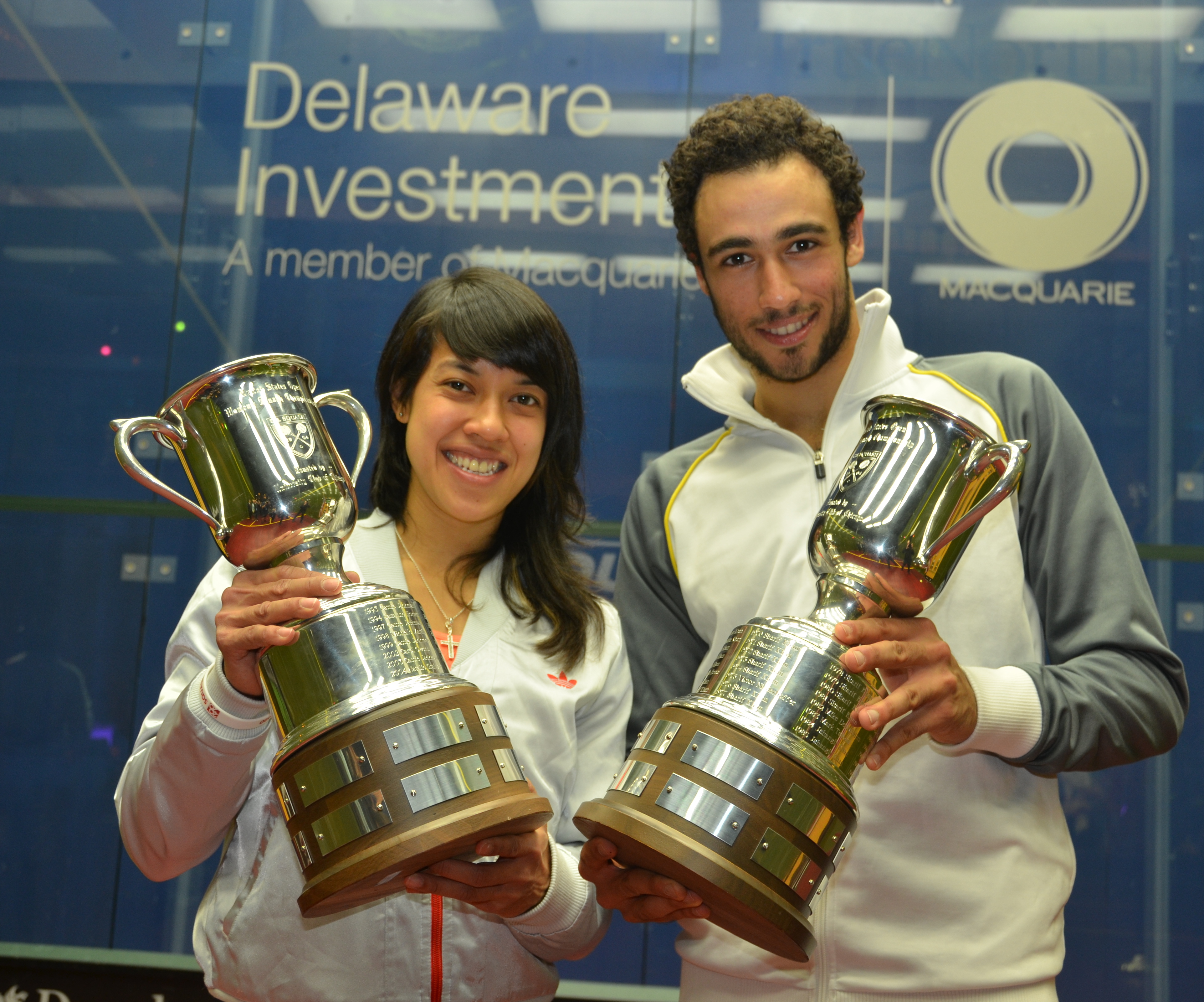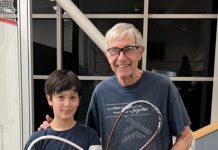Within four weeks of each other this spring, Nicol David and Ramy Ashour, two of the greatest, most electrifying players in squash history, stepped down from the professional tour and retired. They had similar careers. Prodigies, each were the first to capture the World Juniors twice. Each dominated the pro game, winning every major event and putting together remarkable unbeaten streaks—fifteen months, forty-nine matches for Ashour; sixteen months and sixty matches for David. In the process they revolutionized the world tour. David pushed women’s squash to new heights of athleticism with her incredible speed and anticipation. She proved that the seventeeninch tin, long thought impossible for women pros, was in fact necessary. Ashour, with his amazing deception and touch, moved the men’s game away from the blocking, attritional style for good. He opened up squash, breathing in the air of creativity. Both were outrageously gifted but hiding behind the talent was diligent, hard work. Both went into exile—David to Amsterdam, Ashour to New York—where they could anonymously practice their craft. Both modeled sportsmanship. Both were enormous hits with fans and the media, owning the highest Q-rating of any squash players. (When they retired David had about 300,000 Twitter followers, 900,000 Facebook followers and 100,000 Instagram followers; Ashour had 38,000 at Twitter, 150,000 at Facebook and 75,000 at Instagram.) Both gave back, going on World Squash Federation ambassador tours and joining the bids for inclusion into the Olympic Games: “What would it mean? Everything.” The two major developments in pro squash in the twenty teens are their legacies. David was essential to the pioneering implementation of prize-money parity, starting at the U.S. Open in 2013, and the 2015 merger of the men’s and women’s pro tours. Only someone with her unsurpassed record, integrity, popularity and charm could have led on both potentiallyfraught initiatives. Again and again, you heard: “We’ve got to do this because of Nicol.” SquashTV was Ramy Ashour’s playground. His shotmaking, his fluid athleticism, his tactics, his astonishing deception—he was born
Exit Stage Left: Nicol David & Ramy Ashour Retire







